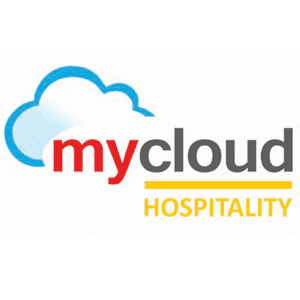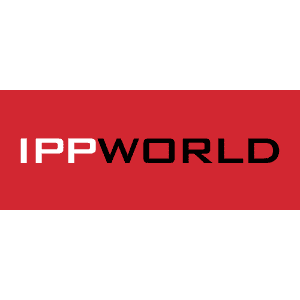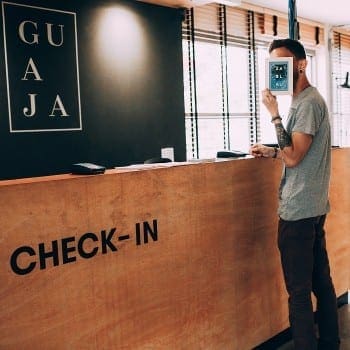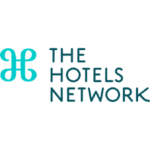 We know recovery is coming for the travel sector sometime in 2021. But the hotel of the next decade will still be defined by scrupulously tight budgets without any compromise on service delivery. This can only be done through automation so that labor costs can be kept at a minimum while still enabling your teams to be as productive as possible.
We know recovery is coming for the travel sector sometime in 2021. But the hotel of the next decade will still be defined by scrupulously tight budgets without any compromise on service delivery. This can only be done through automation so that labor costs can be kept at a minimum while still enabling your teams to be as productive as possible.
With the immediate need for contactless communications – and indeed this need will remain in place for years to come – having a robust messaging application to chat with guests is instrumental for hotel operations in the new normal. Therefore, it’s critical that we spend the next few months evaluating our guest communications platforms to see where we can automate and where we can heighten service.
Before diving into a list, one such feature that should be on every hotelier’s mind to achieve the above broad goal is the deployment of chatbots. Prospective guests want fast responses and quite often their questions can be effectively answered with a basic, preprogrammed response, so why bother a human staff member with these distractions?
For another perspective on where this technological niche is headed, I reached out to Michael Kessler, CEO for ReviewPro which provides a full suite of guest experience management tools. “It goes without saying that your prebooked guests or any casual shoppers would prefer their requests be answered in as timely a manner as possible,” said Kessler. “For this, a continuously learning AI can seriously help. In fact, these tools are already widespread; you’ve probably communicated with an AI in the past, whether you were conscious of it or not.”
Approximately nine out of ten questions posed to hotels can be succinctly addressed with a preprogrammed response. Where are you located? Is your restaurant open? These types of asks can all be outsourced to a chatbot which can also respond in a user’s native tongue.
But beyond chatbots, what features should you look for to increase customer satisfaction and help unburden your teams? In discussing what makes for a top-of-the-line guest messaging platform with Kessler, here are seven key features that you should be aware of when evaluating your options.
1. Hospitality specialization
It’s easy for any vendor to simply say that their solution works for hotels, but our industry comes with so many nuanced issues that you really need a platform that is purpose-built for just us and has mobile responsiveness. With that in mind, your chosen platform should have a flexible configuration that can streamline the interdepartmental coordination that has traditionally caused service delivery hiccups in the past. As well, the ability to customize the user interface can go a long way to subtly reinforcing your brand and giving guests peace of mind that their needs are being managed attentively.
2. App agnosticism
The customer is always right, which in this case means that you shouldn’t try to get guests to only use your own branded app, but that you are flexible to talk with them through whichever medium they prefer. A solid messaging platform must integrate with a myriad of other solutions such as SMS, WhatsApp, WeChat and others, while still bringing conversation threads onto one centralized system for your team to evaluate then disseminate your follow-up back out via the medium your guest is using.
3. OTA and other third-party integrations
Building on the previous point, one problem that needs to be addressed in 2021 is not letting requests made on OTAs go unanswered. Make a good impression by having your guest service via the OTAs fully reflect the attentiveness that users on your own native apps would receive. If you want to convert these customers to book direct, you have to bring on a platform that can easily connect to these third-party websites and house all the specific conversation flows within your own data ecosystem for any staff member to reference, analyze customer sentiments or ‘tag in’ as needed.
4. PMS and booking engine integrations
The flip side of the OTA coin is integrating with the PMS, CRM or directly with the booking engine so that any customer interactions can be tied to a specific reservation or guest profile. This gives the hotel full visibility on the request to better anticipate next steps, upsell, offer additional services or accurately logging complaints for the most appropriate recovery action. It also creates a positive feedback loop that enhances sales from the hotel’s brand.com. As a basic example here, a two-way PMS connection can tell you if someone is a transient or group guest, where the response to the same question could be entirely different for both individuals. Next, integrating with a hotel’s CRM or case management system allows you to process then convert any intentions built within normal human conversations into specific follow-up actions to improve the onsite experience.
5. Analytics
We live in a data-driven world, and rightfully so because there’s so much we can do to increase team performance and revenues by continually tweaking our operations to better fit with changing guest expectations. By having a smart analytics tool, you can examine what types of questions are most commonly asked to determine the most effective responses or what times of day the most inquiries are coming in as well as benchmark performance against a few key indicators. For example, if most of your maintenance requests are initiated between the hours of 5pm and 9pm then how should you adjust your staffing in the engineering department? And, of course, data greatly helps with segmentation insofar as finding those unique guest psychographics to offer truly personalized offers, packages and onsite experiences.
6. Escalation
Even with a machine learning component, you will nevertheless need to migrate many requests to a live agent, especially in error recovery situations. Thus, a robust chatbot for the decade ahead must come with a strong foundation of natural language processing (NLP) to drive sentiment analysis as well as customizable escalation parameters to determine when and how to bump a conversation up to your intake team, all so that service is never endangered. With any escalation, a case should be automatically created and assigned to the right department, be it room service orders, housekeeping matters or maintenance issues, all with timescales and full manager visibility to provide accountability and set employee performance markers.
7. Automating outbound communications
If 2021 is anything like 2020, then you know that operating protocols may need to quickly change in response to new mandates for PPE or COVID-19 safety. The onsite experience will thus be better if your guests know what to expect and automating these updates via programmed outbound messages means your teams are not burdened with manual repetition.
Secondly, having the ability to send out mass messages can create opportunities for additional revenue capture. While cross-selling and upselling have been mentioned before, what’s critical in today’s leisure-dominant travel landscape is that you optimize TRevPAR (total revenue) by encouraging guests to utilize more of your onsite amenities or to opt for a stay suite in lieu of a standard room. Sales messages of this sort will be more impactful and more profitable if they are designed according to segmentations and specified stages in the customer journey, both of which can be better discerned via a platform that keeps a detailed log of conversation flows.
This article may not be reproduced without the expressed permission of the author.































